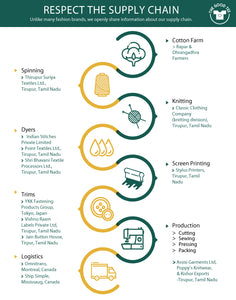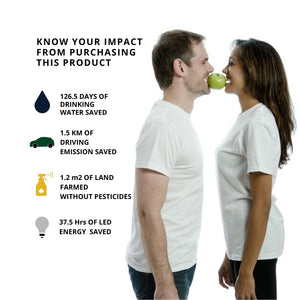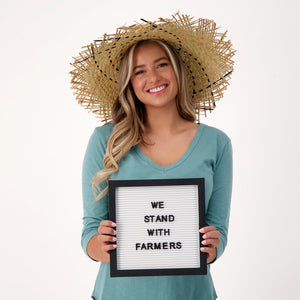The Compostable Phone Case: #Thegoodtribe Interview with Pela Case’s Founder Jeremy Lang

In today’s digital world none of us can do without a phone, right? Well we think, then none of us should do without the Pela Case for our phones either. Why may you ask? That's because it’s the easiest way we all can help in keeping 1 BILLION pounds of plastic from being made. Yes, that’s correct! That much plastic gets produced just to protect our phones and while on an average most people change their phones every 2 years, the plastic cases we use, stay around on the planet for hundreds of years. Mind-boggling!
The good news is that there are people among us who identified this dire situation and decided to do something about it. Just like Pela, we at The Good Tee believe in plastic free and biodegradable products and we both believe in doing our bit for the planet. So, we sat down with the founder of Pela Case – Jeremy Lang, who with a dream to create a waste-free future, developed an idea that is not just creative but also sustainable. Here’s what he had to say.
-
What’s the story behind the Pela Case, how did the idea come about?
When I was ten years old, I was driving with my dad on the Canadian Prairies at harvest time. It was starting to get dark outside and the horizon was glowing orange, when we came over a hill, we could see that all the fields were on fire. It was an eerie feeling. I asked my dad what was going on, he said that farmers were burning their flax straw because the fibre in it is so strong that it gets caught in their equipment. I said, "Well if it's that strong, it must be good for something." He replied, "Well, maybe when you get older, you can think of something!"
I studied Agriculture and Environmental Science at the University of Saskatchewan. That’s where I learned that in Canada, we grow flax for the seed, whereas in Europe, they grow the flax fibre in the straw because it’s strong, lightweight and shock-absorbent. With that in mind, I needed to figure out what I could use this 'waste' material for.
During a family vacation in Kauai in 2009, we were playing in the sand with my son who was a year and a half at the time, and as we were digging, we kept finding little pieces of plastic everywhere. It really bothered me and made me wonder where this litter was coming from, so I researched what was going on.
I found out about the Pacific Gyre and how plastic in the ocean collects there and then it washes up on the beaches in Hawaii. And, that’s where it all started.
From there, I looked for sustainable solutions for conventional plastic and I found out about biopolymers - at the time, they were still very brittle and mostly used for single-use items. I discovered that if we combined the flax straw not only would it make the material stronger, but also shock absorbent and more flexible. Then I needed a product to start with - I noticed how smartphones were really taking off and how most people only kept their phone for 2 years, yet the case to protect their phone would last for hundreds of years, which seemed over-engineered and wasteful, so I created the Pela case as a more sustainable alternative to conventional plastic cases and the first Pela case was launched in 2011.

-
Where does the name Pela come from?
Pela loosely translates into “peel” in Spanish. The idea behind it was that an apple peel protects an apple fruit, and when the peel is done protecting the fruit, it will biodegrade and go back to the earth. Similarly, the Pela Case protects the Apple iPhone and goes back to the earth when it's done protecting the phone.
-
How are the Pela cases different from other cases? Tell us about the material used and how is it sustainable?
We believe the responsible use of materials will lead to a waste-free future. By choosing sustainable materials over non-sustainable materials we can make the shift toward a sustainable future and leave this planet better than we found it for future generations.
We try to mimic nature and align our product’s life cycle as close to a plant’s life cycle as possible by developing our products through our sustainability standards and focusing on renewable, circular and biodegradable materials, and by testing and comparing our products to conventional products. We utilize renewable resources as much as possible.
We believe we can design out waste and pollution by thinking circular. We give products a second or third life before we give them a graceful end of life. We take responsibility for other companies’ plastic waste, in addition to our own products, through our Pela 360 program. Taking responsibility for our products through their entire life cycle is one of the most sustainable things we can do as a company to shift away from a linear economy, toward a low-carbon emitting, sustainable, regenerative, circular responsible economy. Our 2019 LCA (Life Cycle Analysis) indicates we have 25% less carbon emissions, use 35% less water, and produce 70% less waste than conventional plastic cases. We also offset our entire footprint by purchasing carbon credits to be Climate Neutral.
-
What was something you learned about plastic that you didn't know before you started Pela case?
A big eye-opener for me was to learn almost every piece of plastic that's been created still exists today unless it's been burned. That's linear and not natural. And, less than 10% of all plastic ever gets recycled.
-
What kind of impact have you have made so far? (In terms of metrics)
Pela launched the first compostable phone case in 2011, and we have now replaced over 1 million conventional plastic phone cases with the Pela Case, preventing over 300,000 pounds of plastic waste from landfill to date, and donating nearly $400,000 to grassroots environmental groups through 1% For The Planet.
We are Certified B Corporation, Climate Neutral Certified and member of 1% For The Planet, we’re on a mission to eliminate 1 billion pounds of waste from the global waste stream and continue to research and develop the most innovative products to create a waste-free future. You can see more on our impact here.

-
What is the one thing that keeps you motivated?
My wife and children.
-
When was the last time you had a really good laugh?
Good laughs often come around me, and my wife and children, laughing at me and my cheesy dad jokes and stories...sad but true, keeps me humble:)
-
What does the future hold for Pela Case?
We believe we are just getting started. We’re not ones to sit idle and wait for the next best thing to come along. We continually research, develop and test new materials, products, and design principles to advance the science, push the envelope on what is possible, find or create the next best thing and lead the way in the shift toward sustainability and a waste-free future. It's who we are and the foundation of our mission as a company, and we are excited to keep improving and growing.
-
Is there anything else you would like to share?
It is a beautiful thing to see people rally around a common mission to make a change for the better. I have been thinking about the following quote more and more lately, and it gives me hope for the future. “Never underestimate the power of a small group of committed people to change the world. In fact, it is the only thing that ever has.” ~ Margaret Mead.
Knowing that we all can make a difference to the planet by making a simple choice for our devices is empowering, isn't it? Pela Case has given us all an option which is good for the future, sustainable and is way cooler than plastic. So why not style our phones better and make mother nature proud?
Knowing that we all can make a difference to the planet by making a simple choice for our devices is empowering, isn't it? Pela Case has given us all an option which is good for the future, sustainable and is way cooler than plastic. So why not style our phones better and make mother nature proud?
Love the brand already? Share your thoughts, like, love, follow











Leave a comment